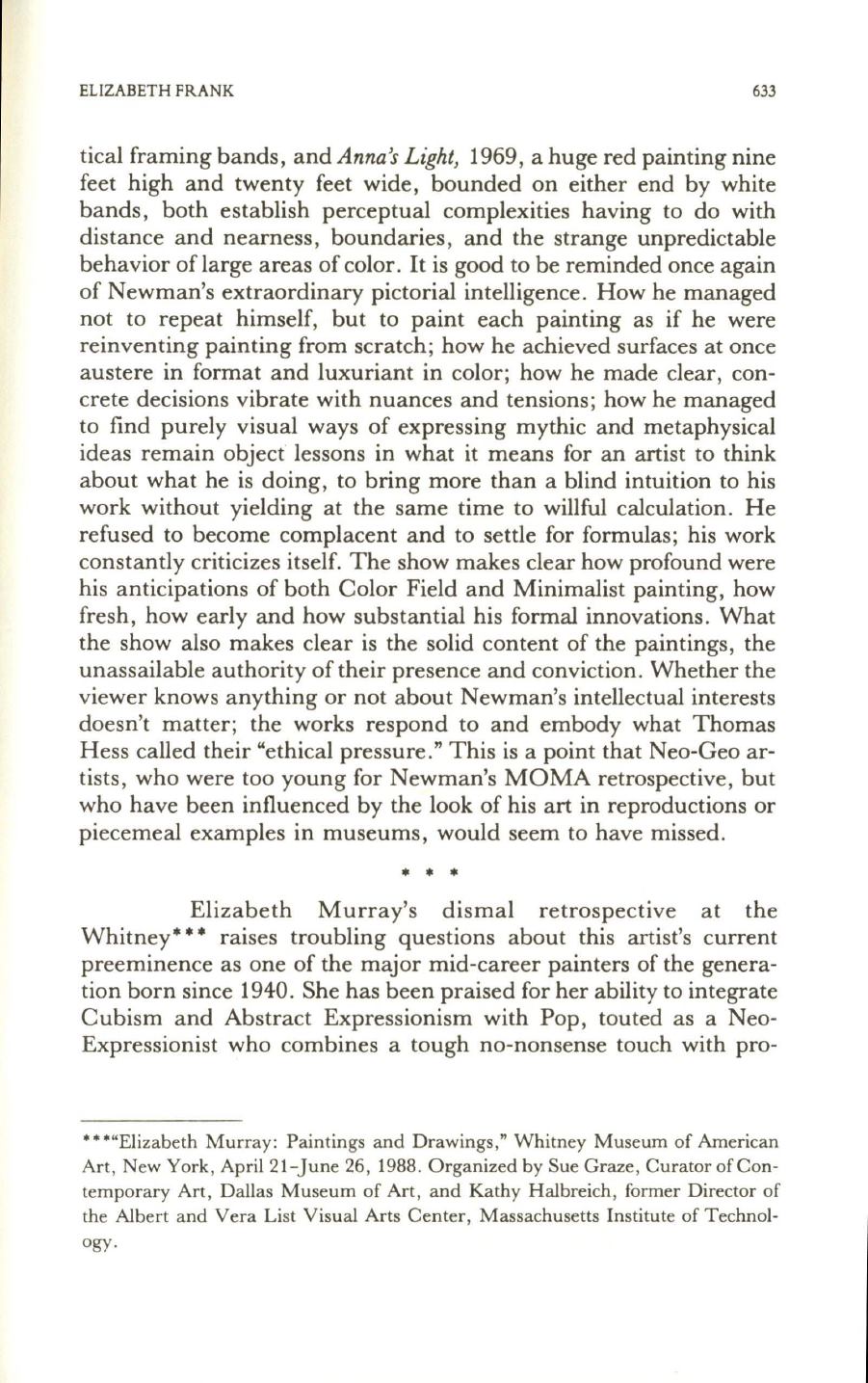
ELIZABETH FRANK
633
tical framing bands, and
Anna~
Light,
1969, a huge red painting nine
feet high and twenty feet wide, bounded on either end by white
bands, both establish perceptual complexities having to do with
distance and nearness, boundaries, and the strange unpredictable
behavior of large areas of color.
It
is good to be reminded once again
of Newman's extraordinary pictorial intelligence. How he managed
not to repeat himself, but to paint each painting as if he were
reinventing painting from scratch; how he achieved surfaces at once
austere in format and luxuriant in color; how he made clear, con–
crete decisions vibrate with nuances and tensions; how he managed
to find purely visual ways of expressing mythic and metaphysical
ideas remain object lessons in what it means for an artist to think
about what he is doing, to bring more than a blind intuition to his
work without yielding at the same time to willful calculation. He
refused to become complacent and to settle for formulas; his work
constantly criticizes itself. The show makes clear how profound were
his anticipations of both Color Field and Minimalist painting, how
fresh, how early and how substantial his formal innovations. What
the show also makes clear is the solid content of the paintings, the
unassailable authority of their presence and conviction. Whether the
viewer knows anything or not about Newman's intellectual interests
doesn't matter; the works respond to and embody what Thomas
Hess called their "ethical pressure." This is a point that Neo-Geo ar–
tists, who were too young for Newman's MOMA retrospective, but
who have been influenced by the look of his art in reproductions or
piecemeal examples in museums, would seem to have missed.
• • •
Elizabeth Murray's dismal retrospective at the
Whitney· •• raises troubling questions about this artist's current
preeminence as one of the major mid-career painters of the genera–
tion born since 1940. She has been praised for her ability to integrate
Cubism and Abstract Expressionism with Pop, touted as a Neo–
Expressionist who combines a tough no-nonsense touch with pro-
""""Elizabeth Murray : Paintings and Drawings," Whitney Museum of American
Art, New York , April 21-June 26, 1988. Organized by Sue Graze, Curator of Con–
temporary Art, Dallas Museum of Art, and Kathy Halbreich, former Director of
the Albert and Vera List Visual Arts Center, Massachusetts Institute of Technol–
ogy.


